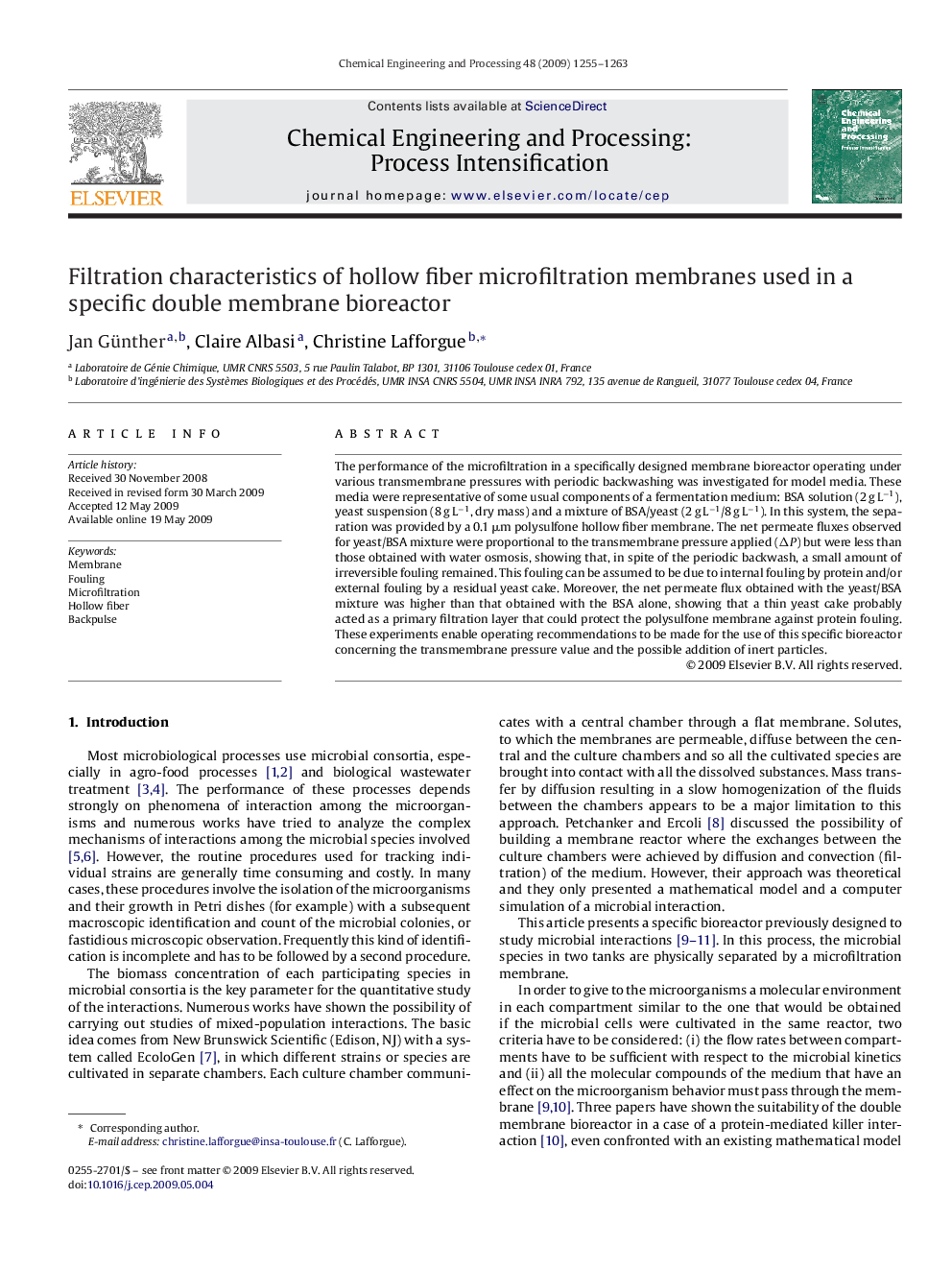| Article ID | Journal | Published Year | Pages | File Type |
|---|---|---|---|---|
| 688462 | Chemical Engineering and Processing: Process Intensification | 2009 | 9 Pages |
The performance of the microfiltration in a specifically designed membrane bioreactor operating under various transmembrane pressures with periodic backwashing was investigated for model media. These media were representative of some usual components of a fermentation medium: BSA solution (2 g L−1), yeast suspension (8 g L−1, dry mass) and a mixture of BSA/yeast (2 g L−1/8 g L−1). In this system, the separation was provided by a 0.1 μm polysulfone hollow fiber membrane. The net permeate fluxes observed for yeast/BSA mixture were proportional to the transmembrane pressure applied (ΔP) but were less than those obtained with water osmosis, showing that, in spite of the periodic backwash, a small amount of irreversible fouling remained. This fouling can be assumed to be due to internal fouling by protein and/or external fouling by a residual yeast cake. Moreover, the net permeate flux obtained with the yeast/BSA mixture was higher than that obtained with the BSA alone, showing that a thin yeast cake probably acted as a primary filtration layer that could protect the polysulfone membrane against protein fouling. These experiments enable operating recommendations to be made for the use of this specific bioreactor concerning the transmembrane pressure value and the possible addition of inert particles.
